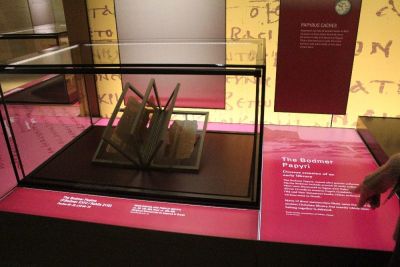10 Interesting Things to See at the New Museum of the Bible: Sneak Preview

2. Bodmer's Psalms
The "History of the Bible" exhibit takes visitors through the years of the earliest Bible translations with a combination of genuine artifacts and facsimiles of the New Testament that was translated into other languages on very early papyrus pieces.
The museum is home to one of the earliest and most complete biblical manuscripts — the Bodmer Papyri. Named after collector Martin Bodmer, the Bodmer Papyri includes about 20 early codices that were discovered in Egypt in 1952 that date back to the third or fourth century.
According to the museum, about 10 codices contain Coptic translations of Old and New Testament books, while the other codices were translated into Greek.
According to Lazenby, the collection is mostly complete and the museum possesses over 90 leaves of the collection.
On display currently are a handful of pages from the book of Psalms.
"It represents that transition from a period of the Dead Sea Scrolls and the early papyrus fragments to the complete manuscripts that survived," Lazenby explained.
"It is the earliest, largely complete example of a Psalms codex. I know they have more than 90 leaves of it. It is something like 90 percent complete. There are about a dozen pages at the beginning and end that are missing and I think there are two or three pages in the middle that are missing but other than that, it is a complete manuscript and it is very comparable to some of the great manuscripts in terms of its content. It is a fantastic witness to the text of the Psalms for that period, particularly in a Christian context how it is being transmitted."




























